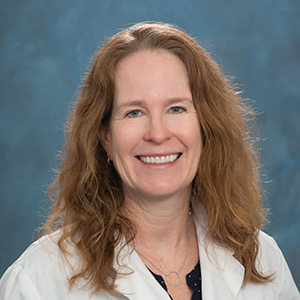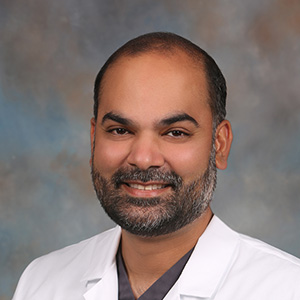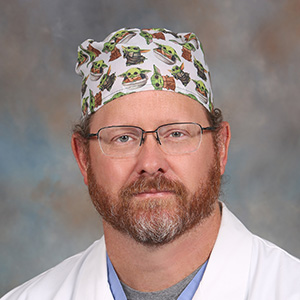Curriculum
The emergency medicine residency curriculum is based on twelve, 4-week blocks during each post-graduate year. The curriculum is designed to provide residents with the necessary skills and knowledge to practice effectively in any Emergency Department.
The PGY-1 year is designed to give incoming residents a broad knowledge base and a foundation in core Emergency Medicine principles and clinical skills.
In the PGY-2 year, residents assume more leadership and patient care responsibility. This is achieved through an increased number of Critical Care and Emergency Medicine months. Residents are also encouraged to develop more advanced procedural skills and to learn to manage multiple high acuity patients.
PGY-3 residents take an active role in overseeing the Emergency Department flow as well as supervising PGY-1 and 2 residents. They also lead weekly case conference and provide laboratory instruction to rotating medical students. Senior residents explore their personal interests during 2 months of electives. This includes rotations in global health, wilderness medicine, ultrasound, EMS, toxicology and a wide variety of EM related topics.
Our Curriculum
- Emergency Medicine, 28 weeks
- Pediatric Emergency Medicine, 4 weeks
- Trauma Surgery, 4 weeks
- Medical ICU, 4 weeks
- OB / GYN, 4 weeks
- Anesthesia/Ultrasound, 4 weeks
- Emergency Medicine, 28 weeks
- Trauma Surgery, 8 weeks
- Medical ICU, 4 weeks
- Pediatric Emergency Medicine-San Antonio, 4 weeks
- Pediatric ICU, 4 weeks
- Emergency Medicine, 24 weeks
- Pediatric Emergency Medicine, 8 weeks
- Elective, 8 weeks
- Medical ICU, 4 weeks
- EMS / ED Administration, 4 weeks
The Simulation Medicine curriculum is an essential component of the CHRISTUS Health – Texas A&M Spohn Emergency Medicine Residency Program. Our state-of-the-art Simulation Center provides an advanced learning environment for residents to develop their clinical skills, enhance decision-making abilities, and foster effective teamwork through immersive simulation experiences. The curriculum is meticulously crafted and continually updated by the Emergency Medicine faculty, ensuring its relevance and effectiveness.
The curriculum is designed to offer residents hands-on learning opportunities that closely mirror real-life emergency situations. By utilizing high-fidelity simulation mannequins, cutting-edge medical equipment, and lifelike clinical scenarios, residents can engage in realistic patient care encounters within a controlled and safe environment. Our in-house 3D printing services have given us the capabilities to quickly produce procedural models such cricothyroidotomy, pericardiocentesis and lateral canthotomy trainers to name a few.
Simulation encounters are integrated into the weekly didactic sessions allowing residents to apply the knowledge gained from didactic lectures and apply it directly to simulated patient encounters and procedural skills labs.
In an effort to provide a comprehensive and real-world educational experience, the curriculum extends beyond the boundaries of the hospital. Throughout select portions of the academic year, the curriculum incorporates collaborations with Emergency Medical Services (EMS) providers and the local Corpus Christi SWAT team. This offers residents unique opportunities to practice pre-hospital care, refine communication strategies during patient handoffs, and navigate high-stress, high-acuity situations encountered in tactical emergency medicine. By engaging with EMS and SWAT team members, residents gain exposure to the challenges and complexities of emergency care outside the hospital setting.
Shani Italiya, DO
Assistant Professor
Director of Simulation Education
Medical Director - CHRISTUS Spohn Regional Simulation Center
Our program is committed to arming each resident with the skills to integrate ultrasonography into his or her professional career. We provide an outstanding experience where each resident develops proficiency in bedside sonography under the supervision of credentialed physicians and ultrasound technicians. Our residents have competed in SONOGAMES each year at the SAEM Annual Meeting.
Our classroom didactics and hands-on practice begin during the first week of orientation with real-time practice on phantom and human models. Our innovative ED Ultrasound curriculum partners interactive lectures with immediate hands-on ultrasound practice in a laboratory setting.
Each resident becomes proficient in core ED ultrasound exams such as FAST (focused assessment with sonography in trauma), biliary tract, cardiac, DVT, aorta, renal and pelvic studies as well as in ultrasound-guided procedures and newer ultrasound applications. This is accomplished through bedside teaching, procedure labs, and classroom didactics throughout all three years of training.
Most residents choose to obtain additional ultrasound training by participating in our emergency ultrasound resident elective.
Guy Youngblood, MD
Emergency Ultrasound Director
The emergency medicine residency program maintains a close relationship with EMS. Many of our ED staff members hold prehospital care positions in addition to their ED responsibilities. Residents participate in EMS care through ambulance and helicopter ride-alongs, EMS field day activities and through telemetry guidance. Residents have the opportunity to work with the Corpus Christi Swat Team through Tactical EMS experience as well.
Michael Simmons, MD
EMS Director
Our program provides residents with a broad exposure to the research process. All residents participate in a research project during their residency. In addition, EM faculty develop and conduct research that involve residents, medical students and undergraduate b students as a research team.
The research curriculum in the resident’s first year provides the basic knowledge for hypothesis development, study design, methodology, basic statistical methods, and manuscript development. Subsequent research conferences build upon this knowledge which culminates in the development and completion of a research project. The second year resident, with input of the research director and assigned faculty member, submits a research proposal to the IRB and, following approval, begins data collection. Statistical analysis and manuscript development and subsequent submission to a peer reviewed journal is the last phase of the three year EM research program. In June of each year, all research projects are presented at the senior research forum.
The research process is aided by the Emergency Medicine Residency Associates Program (EMRAP). This program is a partnership with Texas A&M University-Corpus Christi, in which undergraduate students assist residents and faculty in the collection of research data. This opportunity allows students to gain valuable research experience, provide exposure to the medical profession by shadowing physicians and obtain university course credit. Biweekly meetings, lectures, and assignments keep these students actively involved in departmental research projects.
Peter Richman, MD, MBA
Professor, Emergency Medicine
Director, Emergency Medicine Research
Explore Wilderness Medicine in the beautiful, tropical environment of coastal South Texas.
Wilderness Medicine Experience may include:
- Tactical EMS - Spend a day with the Corpus Christi SWAT team
- Marine animal toxicology and tour at the Texas State Aquarium
- Exposure Illness - visit with US Border Patrol and Border Patrol Search, Trauma and Rescue (BORSTAR)
- Kayaking Trip in the Laguna Madre
- Rescue skills with Park Rangers on the Padre Island National Seashore
- National Nature Toxins Research Center visit (learn about venomous snakes)
- Beach campout and wilderness medicine skills practice

Wilderness Medicine Director








